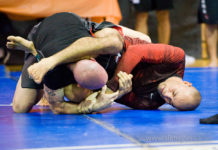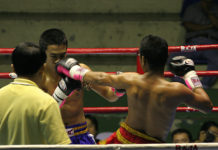
“20141012_0139” by Wolf Pictures is licensed under CC BY-NC-ND 2.0
With Jiu-jitsu, it’s often said that the best way to get better is to just show up. While this is true there’s something to be said about how you, as an individual, learn things best. If you’ve just started learning BJJ or have reached a plateau in your training, understanding your learning style may help in your journey.
To be clear: we aren’t talking solely about “learning styles” as related to psychology and social sciences. We’re talking about your BJJ learning style. How do you best process what you learn and make it your own?
Relax and Take Notes
One of the simplest and often suggested approaches to learning BJJ is to start a journal. In your journal you can log your mat time, what you’re working that day/week, etc. Keeping a journal allows you to track your overall progress, and gives you something to look back on. Sometimes seeing how far you’ve come helps push you forward.
Writing things out by hand may also help play a role in improving memory, and building connections between what you learned that day. Just like note taking in school, you’re actively taking time to scribble out your observations. If you learn a new submission then you may write out the steps. This in turn helps to cement the process in your mind, making it easier to recall when drilling.
Speaking of drilling: how often do you drill?
Drillers Make Killers?
Drilling can be one of the more daunting parts of BJJ. Performing repetitions builds muscle memory, and in many ways just drilling is a work out in and of itself. But are all the reps necessary?
Some people, like Australian black belt Kit Dale, have said that drilling isn’t as important as it’s made out to be. Not that it’s bad or unnecessary but maybe a bit redundant. The repetitions don’t matter as much as being able to replicate what you learned in a live situation.
Situational drills seem to be the happy medium here. Placing yourself in positions and then attempting to perform what you learned. Whether it’s escaping an arm bar or finishing one, the reality is things don’t always go as planned. Having an idea of what to do when that happens is a crucial part of learning BJJ.
The Devil’s in the Details
As you progress further and further in your jiu-jitsu journey, you’ll find yourself narrowing your focus more and more. Not in your mindset or way of thinking. Rather your attention begins to shift from just ‘how’ to do a move, and you begin to look at ‘why’ it works the way it does.
Sometimes the difference between getting a sweep and getting stacked relies on one grip. Or maybe it’s the way the you’re gripping. These little details in hand/foot placement, weight distribution, and grip management, can make all the difference.
Take a look at videos made by BJJ Scout and you’ll see what we mean by details. A lot of breakdowns from black belts like Jon Thomas, Kennan Cornelius, and Alec Baulding, feature insight into what they do and why. Start paying attention to the little things and watch your progress grow.
Want to read about how an instruction faux pas could hurt your ability to learn? Check out this article by Louis Martin and find out why sometimes it’s better to teach as opposed to lead.















